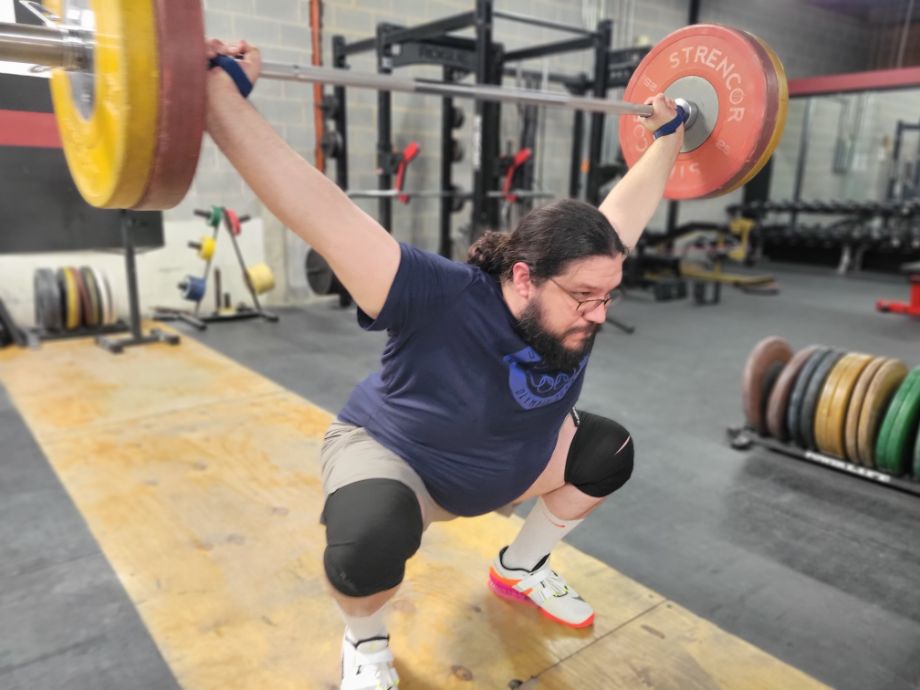We test and review fitness products based on an independent, multi-point methodology. If you use our links to purchase something, we may earn a commission. Read our disclosures.
Step into any gym in the country, and you’re sure to see someone bench pressing, squatting, and doing deadlifts; but will you see someone practicing the snatch exercise?
Probably not; the snatch is considerably less popular because it’s hard! Like, really, really hard! Learning proper snatch technique, however, is well worth the effort, according to USA Weightlifting Coach and Olympian (and GGR staff writer) Caine Wilkes.
“The snatch greatly increases your ability to produce explosive power,” says Caine, “which translates to most other lifts. Perfecting the snatch helps make you a better weightlifter.”
RELATED: Weightlifting Belts Guide
That’s why we’re breaking down the snatch exercise to help beginners and seasoned lifters alike wrap their heads around this technical Olympic lift. You’ll get step-by-step instructions, tips, and tricks from an Olympian, snatch variations, and more!
What Is the Snatch Exercise?
The snatch is an Olympic weightlifting movement that involves lifting a barbell from the floor to the overhead position. It’s also a full-body compound exercise, targeting muscle groups in the legs, hips, back, shoulders, and arms.
The snatch was originally featured in the 1896 Olympic Games as a single-arm lift. In 1928, the lift was converted to the two-handed version, which has remained the standard ever since.
The snatch remained a niche lift until the rise of CrossFit exposed a wider audience to the movement during the 2000s. Today, many people are finally beginning to understand that the snatch, while difficult, is far too effective to ignore.
RELATED: Complete Beginner’s Guide to CrossFit Exercises
How to Do the Snatch Exercise
- Stand with your feet hip-width apart, toes pointed outward, and a loaded barbell on the floor in front of you.
- Squat down and grip the bar using an overhand grip or hook grip.
- Drive your feet into the floor and extend your hips while pulling the barbell upward.
- As the barbell reaches the mid-thigh region, explosively pop your hips, open your shoulders, and start pulling with your arms.
- Drop beneath the bar in a partial squat position, stabilizing the bar overhead.
- Fully extend your arms in the overhead lockout position, then push through your heels to stand up, fully extending your hips and knees, and finish the rep.
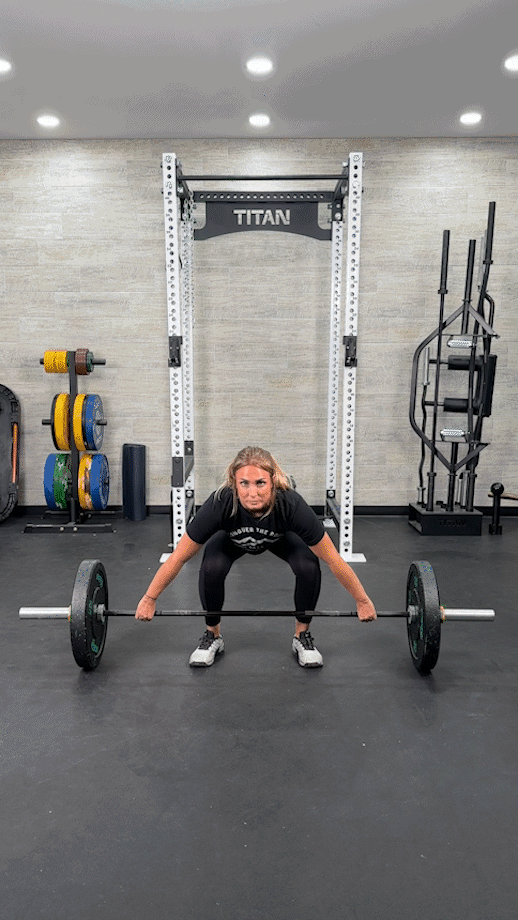
Trainer Tips for Form
A well-executed snatch is lightning-quick, but there are many different cues to keep in mind from start to finish. Check out Caine’s expert tips below!
Perfect Your Starting Position
The snatch is about movement efficiency and power production. You’re going to seriously compromise your ability to generate force if your starting position isn’t dialed in.
“As with many lifts, start with a flat back, chest up, and eyes fixed forward,” says Caine. “You also want the bar positioned over your midfoot to guarantee the straightest possible bar path.”
When in doubt, review your form by either practicing in front of a mirror, recording and watching your performance, or working with a qualified coach or personal trainer for feedback.
Be Patient With Your Pull
“The first pull is one of the most important stages,” says Caine, “because it sets up the rest of the lift. It’s worth it to take your time and really focus on engaging your lower body, so you have enough power to move through the rest of the lift.”
The first pull, in case you’re wondering, is the period of time in which the barbell is between the floor and mid-thigh region. So, try not to rush the lift, especially during this critical stage.
Don’t Open Your Hips Too Early
The second pull is the point at which the bar has reached the mid to upper thigh region, and now you’re going to pop open your hips and drive the bar upward using the power it creates.
“This part is all about timing,” says Caine. “Opening the hips too early causes you to lose power. Opening too early also could send the bar away from the body, further diminishing the force you need to complete the lift.”
So, it’s important to get the timing right. Luckily, there’s a great way to practice this specific portion of the light—the snatch pull.
RELATED: Best Deadlift Variations
“The snatch pull is my favorite way to teach snatch timing,” says Caine. “Instead of doing a full snatch, you focus only on the beginning portion. The goal is to get to the moment where you pop those hips and let the bar bounce upward without pulling with your arms at all.”
The snatch pull works great as a skills drill or warm-up exercise for your snatch workout. Caine recommends working with light weights, like an unloaded barbell or length of PVC pipe, so the focus stays on form.
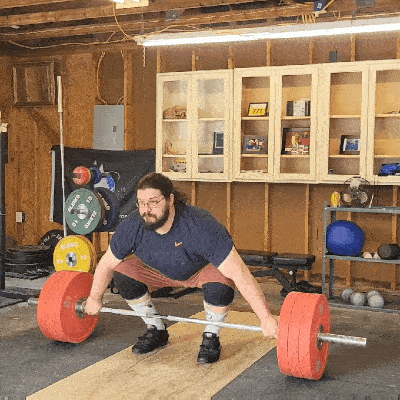
Don’t Pull Too Early
“The pull is a critical part of the lift,” says Caine, “but you can’t start pulling too early, or you’ll wind up trying to move a very heavy barbell using only your arms.”
Relying on your arms too much isn’t only inefficient; it can be dangerous under the right circumstances, as it increases your risk of injury.
For optimal power generation, initiate the lift using your legs and hips, transferring the power to your upper body only when necessary—when the barbell passes the upper thigh.
Common Snatch Mistakes
What sort of things should you look out for in your pursuit of weightlifting glory? Caine shares some of the most common snatch mistakes so you know what to avoid.
Inconsistent Start Position
It doesn’t matter if you’re aiming to do one perfectly-performed snatch or cycle twenty repetitions in a CrossFit WOD; your starting position should stay consistent every time.
RELATED: 100+ CrossFit WODs for Hypertrophy
“Reset before every rep,” says Cain. “Check your foot positioning, your hand placement, what your chest and back are doing, where you’re looking—everything contributes to efficiency and power. One small change is all it takes to change the outcome of the lift.”
Grip Too Narrow
Some find the snatch grip very uncomfortable because it’s a lot wider than the kind of grip you’d use on virtually any other lift. There’s a reason for this.
“The snatch grip is designed for maximum stability,” says Caine. “It helps guarantee you get that bar overhead and keep it there while minimizing the strain on your wrists and elbows.”
Keeping your grip wide creates a stable base, allowing you to steady the barbell in the overhead position and complete the rep, so make sure your snatch grip is wide enough.
“Don’t overdo it, because too wide causes you to lose stability too,” says Caine. “Slightly wider than shoulder-width works; right outside the knurling if you’re using an Olympic barbell.”
RELATED: What is Barbell Knurling?
Too Fast Off The Floor
The first pull of the snatch requires timing, optimal movement mechanics and bar path, and various muscle groups activating simultaneously to create power.
It’s hard to accomplish that if you’re yanking the bar off the floor like you’re in a rush to get it over with already.
“Move slowly and with control during the first pull,” says Caine, “because you’re going to weaken the second pull if you’re missing the timing due to hastiness or sloppy execution.”
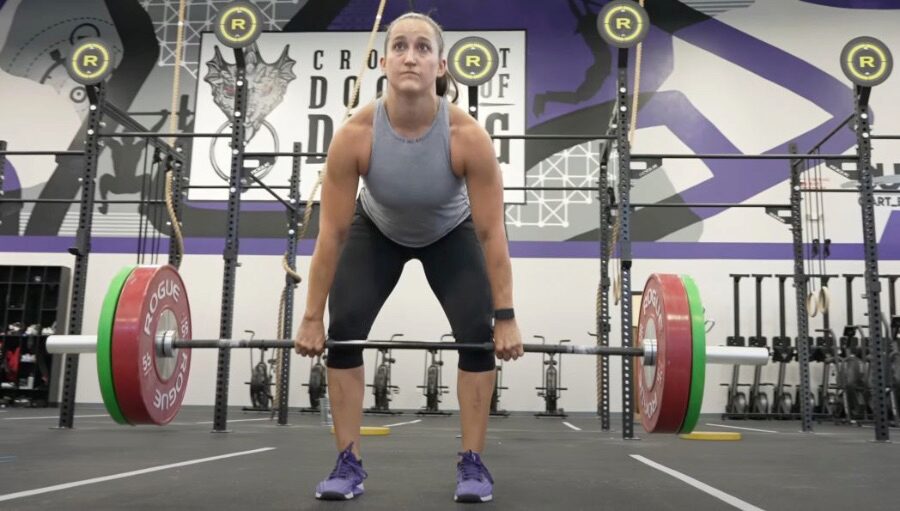
Bouncing The Bar Off Your Thighs
The rules in competitive weightlifting were changed in the ‘60s to allow contact of the legs with the bar, leading athletes to “brush” or bounce the barbell off their thighs to initiate the second pull. This direct transfer of power will help your snatch’s explosive power, but too much of a good thing can be a bad thing.
“When you excessively bounce the bar off your thighs to create force for the second pull,” says Caine, “You’re also pushing the bar outward, creating horizontal displacement. That’s not good movement mechanics, and it will ultimately harm the lift more than it will help.”
Instead, minimize horizontal displacement by keeping the bar close to the body. Create the upward momentum you need to succeed using your lower body muscles and explosive hip extension, transferring it vertically to your arms and upper back muscles as the barbell travels higher.
RELATED: Best Rhomboid Exercises to Build Upper Back Muscles
It’s safer and ultimately more effective.
Arced Bar Path
An ideal bar path for most lifts is vertical and straight, and that’s (mostly) true with the snatch, too. While it may not be a perfectly straight line, any movement forward or back with the bar should only happen in the space of a couple of inches.
“Letting the bar get away from you could be disastrous,” says Caine. “It causes unnecessary strain on your muscles, increasing your risk of injury, and diminishes the power transfer, making it harder to complete the lift.”
To avoid this, keep the bar close to the body and pay special attention to your positioning during the catch. The idea is to slip underneath the bar in a partial squat position rather than fling the bar above your head.
RELATED: Squat Anatomy
By slipping under, the bar continues its straight path, which is exactly what you want.
Pulling Too Early
If you’ve nailed your snatch timing, you’ve created plenty of power to transfer from your lower body to your upper body and arms. Taking over with the arms too early interrupts that power transfer and, in some cases, could result in a complete loss of momentum.
The result basically turns the compound snatch exercise into a muscle snatch in which you are only using your upper body and arms to hoist the barbell overhead. While you could get away with this at lighter weights, you’ll eventually hit a brick wall and plateau until you correct the issue.
RELATED: 5 Signs You’re Making Progress in Your Workouts
Jumping Forward to Receive The Bar
Are you jumping forward or stepping back to effectively stabilize the bar overhead? According to Caine, this isn’t a good sign.
“Repositioning during the catch is an indication that something has gone wrong,” says Caine. “Maybe you didn’t get enough force or height, and you’re compensating with your upper body muscles. Maybe the bar was too far forward, and it offset your balance.”
The best way to find the fault in your form is by working with a qualified coach or certified personal trainer. They will provide personalized feedback to correct the issue at the moment.
Snatch Variations
The full squat snatch is the standard for the Olympics, but there are many variations you could incorporate into your strength training program. Here are some of the most common ones.
Power Snatch
The main difference between the standard and power snatch is the receiving position.
Full squat snatches require the lifter to fully squat under the bar in order to catch, while power snatches involve catching the bar from a partial squat or higher.
Squat snatches are a true testament to a lifter’s strength, flexibility, mobility, and all-around weightlifting proficiency, but power snatches make a great substitute, helping train speed, power, and technique.
Both have their place in a well-rounded strength training program.
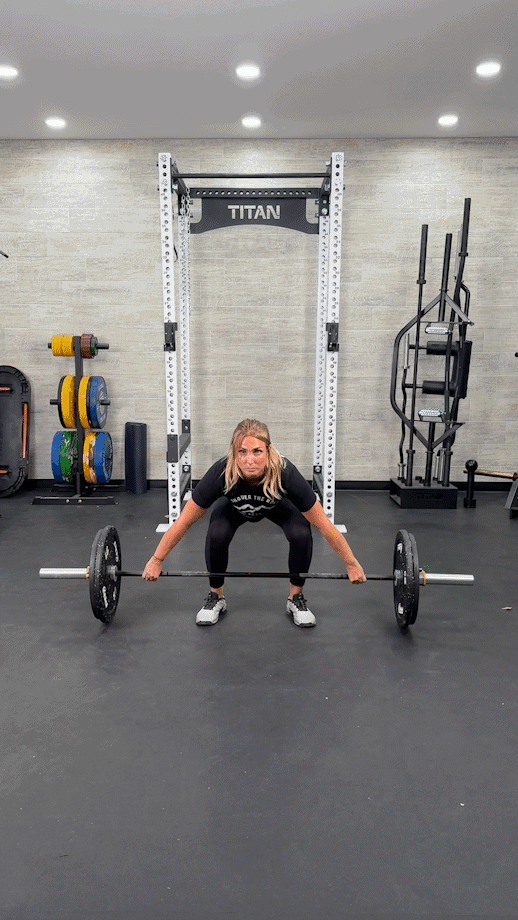
Hang Squat Snatch
The difference between the full squat snatch and hang squat snatch is the starting position.
Squat snatches start with the barbell on the floor, while hang snatches begin from the hang position, with the barbell held between your knees and waist.
For a hang squat snatch, you will still receive the bar in a full squat, stabilizing from the bottom and standing once it’s steadied. There is no change to this portion of the lift.
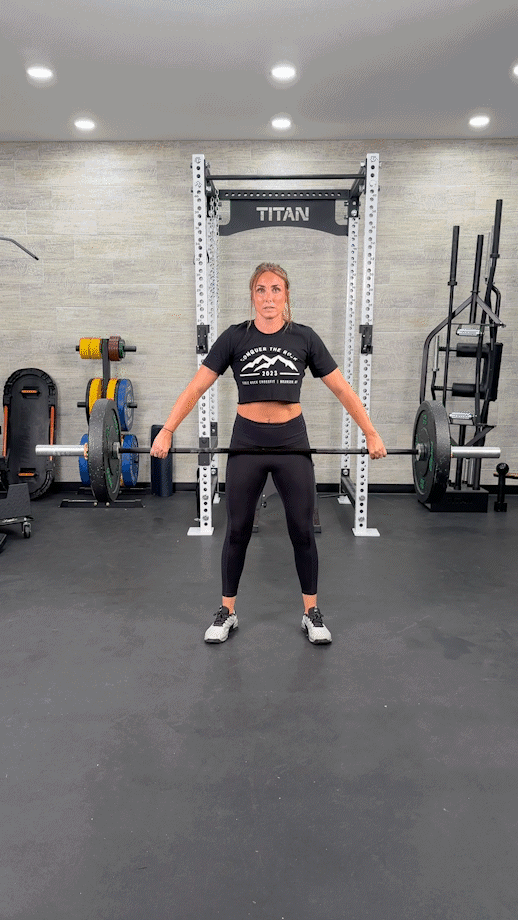
Hang Power Snatch
Combine the starting position of the hang squat snatch with the receiving position of the power snatch and voilà—the hang power snatch.
The hang power snatch is significantly quicker than the full from-the-floor version, making it a popular addition during CrossFit WODs and metabolic conditioning routines.
RELATED: 8 Best Conditioning Workouts
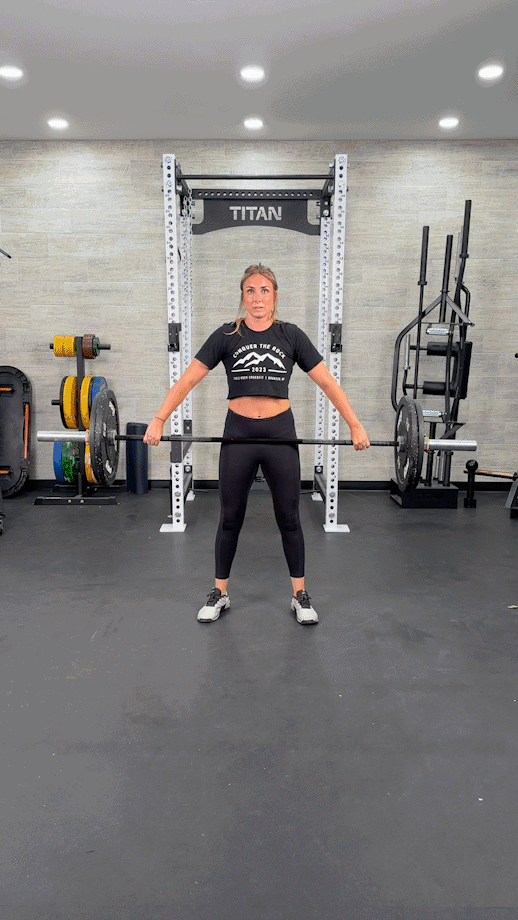
Dumbbell Snatch
The barbell snatch isn’t the only way to perform the exercise; dumbbell snatches and the kettlebell snatch are possible too.
For each movement, the setup and steps are fairly identical, except there is now an added challenge of stabilizing each weight individually. It’s common, for this reason, to perform dumbbell snatches with one arm at a time.
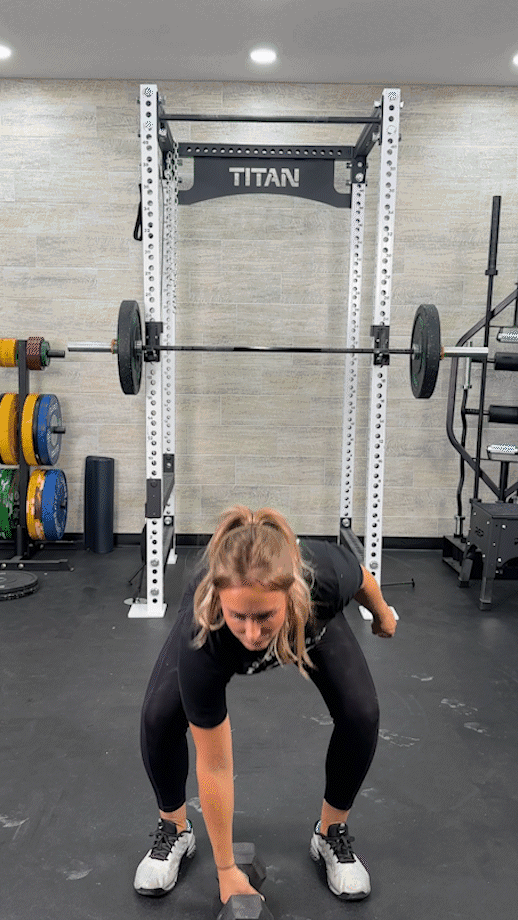
Useful Snatching Equipment and Accessories
Perfecting the snatch takes strength, grit, and determination, but having some snatch-specific equipment doesn’t hurt. Here are some of our favorite snatching accessories to help along the way.
Barbell
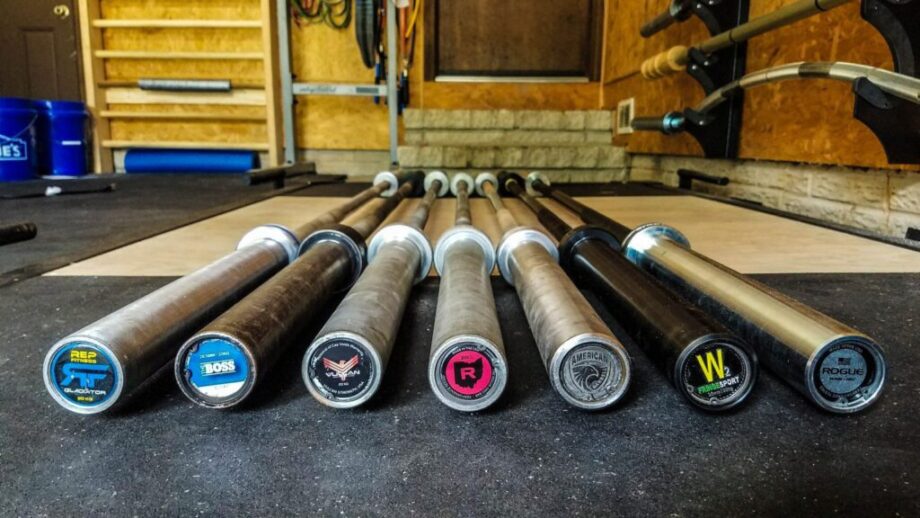
For snatching, picking from one of the best Olympic barbells is a must because they are literally designed with lifts like the snatch in mind.
They’re thicker and stronger and feature rotating sleeves that accommodate Olympic weightlifting movements.
Bumper Plates
Weight plates are a must as well, with the best bumper plates being the no-brainer option.
“When learning the snatch, you’re going to fail many times,” Caine says. “Regular weight plates could seriously damage your floor, so using bumper plates, which have that thick rubber coating, is the best way to make sure you’re not destroying your floor as you learn.”
Even if you are already very proficient with the snatch, it’s common to drop the bar from the overhead position after a successful lift in order to save energy for the next rep. You definitely shouldn’t drop a barbell from the overhead position if you’re using regular steel weight plates.
Barbell Collars
Some lifts don’t rely on barbell collars so heavily. For example, you could (but still shouldn’t) rack up every plate in the gym for your deadlift, lift the bar, and feel confident that nothing is going to slip or slide off, but you can’t say the same for the snatch.
That’s why it’s important to use one of the best barbell collars to hold those plates in place.
Weightlifting Shoes
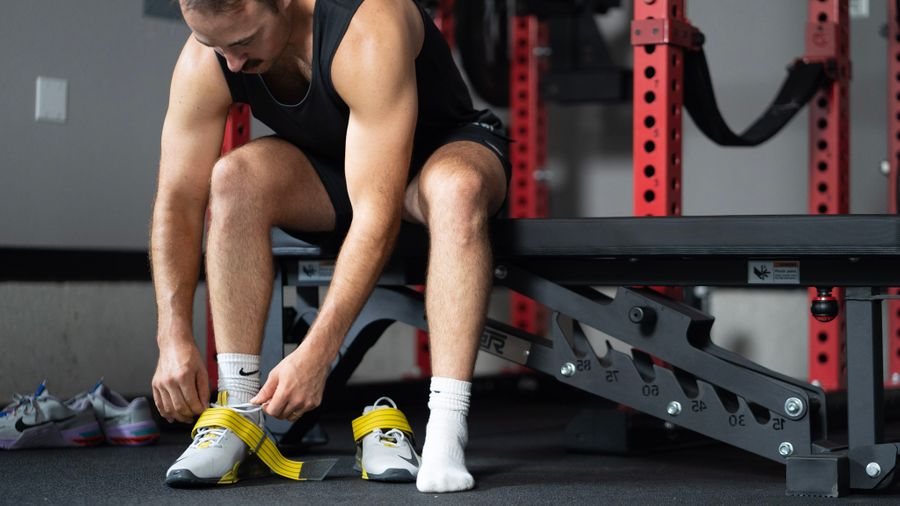
Wearing a pair of the best weightlifting shoes does more than simply show off your fashion sense. Weightlifting shoes feature an elevated heel, which improves ankle mobility and stability.
Weightlifting shoes are not a prerequisite for snatching, but they sure do help.
Lifting Straps
Lifting straps help improve your grip and reduce grip fatigue, ultimately letting you lift heavier weights without burning out.
Caine recommends the Gymreapers Lifting Wrist Straps, which are as comfortable as they are effective, but anything off of our Best Lifting Straps list ought to work.
Lifting Gloves
Lifting gloves also help to improve your grip and help you move heavy weights when your grip strength starts to wear down.
They’re also good for increasing your comfort, reducing friction, and protecting you from calluses and, worse, torn calluses.
Lifting Chalk
Many accessories make for a great snatch, but one of the most inexpensive additions to your snatch arsenal is lifting chalk.
Chalk helps you maintain a good grip on the bar as your grip strength wanes and your palms begin to perspire. Instead of slipping and sliding, you keep a strong grip on the bar, maintaining full control so you can focus on the many other cues that make for a successful snatch.
Lifting Platform
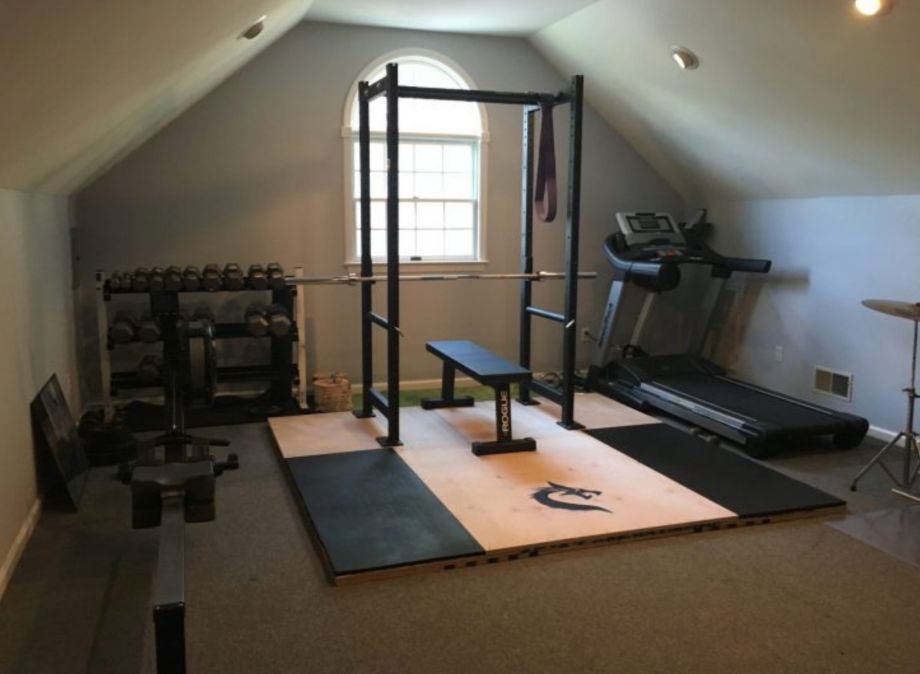
If you’re like Caine, you practically live on a lifting platform, so adding one to your home gym might not be the worst idea if you’re incorporating technical lifts in your everyday training.
Lifting platforms offer a dedicated space to snatch, complete with shock absorption, superior grip and traction, and a stable flat surface to help reduce the risk of accidents during the lift.
When you’re lifting, you need to keep your attention focused on movement mechanics and timing, not whether or not you’re standing in the bumpy part of the garage or basement floor.
RELATED: Best Home Gym Flooring
FAQs: Snatch Exercise
How can I get better at snatches?
Here are some ways to improve your snatch performance:
– Learn proper technique: Watch tutorials or seek the guidance of a strength coach or CPT to optimize your form.
– Improve mobility and flexibility: Stretching, foam rolling, ROMWODs, yoga, or a Pilates workout are all great ways of accomplishing this.
– Build more all-around strength: Strengthening the legs, glutes, back, and shoulders with other lifts will help contribute to better all-around snatch performance.
– Practice snatch variations: Break down the snatch into digestible chunks. Instead of constantly trying to tackle the full squat snatch, incorporate snatch pulls, power snatches, and hang snatches into the mix rotationally.
– Improve core strength and stability: A strong core is at the center of most lifts, so performing other compound lifts, like the back and front squat, will help. Core-focused movements, like planks, crunches, and Russian twists, will help too.
– Record yourself: Record your lifts and lift attempts to share with qualified coaches, experienced lifters, and certified personal trainers. They can give you personalized feedback to improve.
No matter which of these tactics you employ, the most important is to practice consistently. You’ll never master the snatch if you don’t practice regularly, so make this an immediate priority.
How can I improve my snatch technique?
It never hurts to consult a CPT and get personalized feedback but breaking down the movement with bodyweight or reducing the weight that you typically lift while perfecting the movement is an excellent way to get started improving your snatch technique.
Why are snatches so hard?
Snatches are a complex movement that require precise timing and technique, not to mention the uncomfortable overhead squat position you find yourself in before the rep is through, but beyond the incredible physical demands of the snatch exercise, there’s also a psychological barrier.
Beginners are often daunted by the snatch because of the precarious end position and how intimidating the movement mechanics seem. They fear that they will surely injure themselves well before they master this challenging technical lift.
“The fear is not unfounded,” says Caine Wilkes, USA Weightlifting Coach, and Olympian, “and there’s always risk there, but as long as you’re lifting responsibly and under the supervision of a qualified coach or professional, you can manage those risk factors. In the end, it’s worth it to persevere, push through, and succeed. There really is nothing like it.”
Further reading

The Beast Sensor is a complicated and advanced accelerometer built into a module that can be attached to a provided wristband, or if so inclined can be magnetically attached to say a weight stack in a lat pull down or a barbell. In our opinion, the accuracy still needs some work, but it has potential. Read more

In our Lululemon Blissfeel running shoe review, we give our first impressions of the brand’s first foray into footwear. Read more

The age old debate: are barbells or dumbbells better for a home gym? After using nearly every barbell on the market as well as most dumbbells and helping thousands of people start home gyms, I think we have a good idea on which is superior. Mostly, it comes down to your budget and training style–let's discuss. Read more

Looking to save some money? Garage Gym Reviews has an exclusive CAROL Bike Coupon just for our readers. Read more

